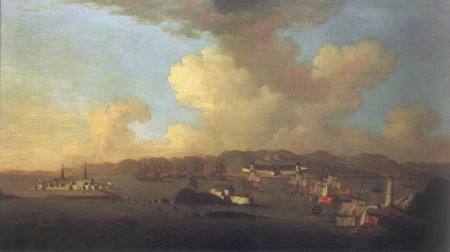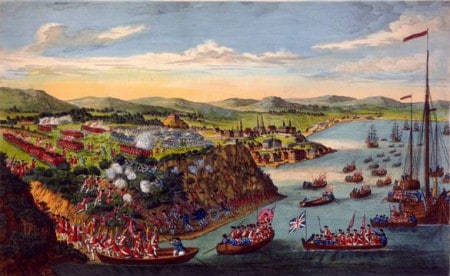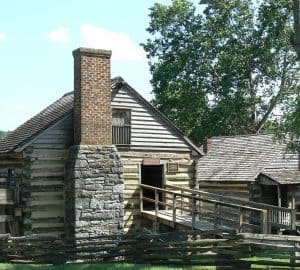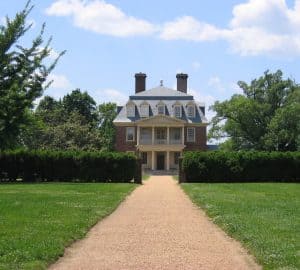From the time that the land we now know as Canada was first discovered and settled, there have been many major wars and minor conflicts that have occurred throughout the centuries on its soil. Almost all of these were related in some way to the British and French interests in the New World as they vied for supremacy for over 150 years. Even though these wars were fought more than 250 years ago, the effect that these conflicts had on the shaping of the country of Canada are still visible today.
There were three periods of conflict that successively followed each other from around 1610 to 1762. The first period of conflict was the French and Iroquois War, also known as the “Beaver War”, which lasted from the early 1600’s until the beginning of the 18th century. French interests in the New World created factions and alliances among the native tribes. The French sided with the Huron-Algonquin alliance and defeated the Iroquois Confederacy in the beginning. However, the Iroquois soon began to use guerilla style warfare tactics, and with their skill in the use of rifles they soon gained the upper hand. A treaty signed by the French and Iroquois in 1701 put an end to the conflict.
King William’s War, which was fought from 1688 to 1697, followed next, with two expeditions sent by British and the American colonies against Montreal and Quebec in 1690 following the successful capture of Port Royal in Acadia from the Acadians. Both offensives were forced to withdraw, and did not succeed in their objectives; the Montreal venture had to return because of disease and lack of supplies, while the Quebec mission was forced back by French defenders. The French hold upon a large part of North America was strongest at this time. But with the turn of the century, the major French and British hostilities were just beginning.
The French built the Fortress of Louisburg in 1720, and began to build up their military strength in Canada. The British were somewhat concerned with the French army being built up in Canada fearing that it might possibly lead to a controlling French presence in North America. But the French were stretching themselves thin around the world, leaving many small garrisons spread far apart which were vulnerable to attack. Soon the British had captured many positions from the French forcing them to regroup and defend themselves in Quebec. But the French still had control of much of the eastern seaboard. This began what was known as the War of the Austrian Succession.

In 1744 part of the French forces based at Louisburg launched an attack on the more southerly town of Canso, which was controlled by the British. The French captured the town and took prisoner about 100 British soldiers after a short but fierce fight. The objective in attacking Canso was supposed to guard the supply lines from nearby settlements, and stop the British from using the town as a staging point for an attack on French Canada. The British reacted quickly to this military move and gathered together an army of Colonial militia commanded by British regulars. In the spring of 1745 the combined British and American colonial armies sailed for Louisburg.
Despite setbacks caused by foul weather and partially trained soldiers, the fleet of ships arrived off Louisburg Harbour and landed their troops with few problems. The French defenders of the beach were beaten back with few casualties on the landing forces, and the attacking forces made camp. For a few weeks a stalemate ensued; then, without warning or negotiations, the French marched out of the citadel – and surrendered. Louisburg was now in British hands and the French hold on the New World was greatly relaxed. But through the strange twisting of political intrigue, only a few years later, in 1748, it was returned to the French in exchange for towns in Belgium, ending the War of the Austrian Succession.

However, in 1758, the British once again saw reason to attack Louisburg and upset the French control over a major portion of the North American continent. Under the leadership of Sir Jeffery Amhurst and General James Wolfe, Louisburg was wrested from French hands forever. The final capture of Louisburg, and subsequent retreat of the French to Quebec, was a major point in the beginning of the Seven Year’s War, sometimes known as the French and Indian War, as it left the French with little support in Canada. Slowly the British won many of the French holdings in Canada, leaving the French with just Quebec. The final showdown between the British and the French occurred in 1759 in Quebec, just outside Montreal.
The Battle of the Plains of Abraham, as it came to be known, was the last major military engagement between opposing French and British forces on Canadian soil. General the Marquis de Montcalm commanded the French troops, while the attacking British regulars were led by General James Wolfe. On September 13, 1759, the fate of French Canada was decided. After cutting off French supplies and threatening connections between Quebec City and Montreal, General Wolfe scaled the cliffs below Quebec City and by 8:00 am had assembled his entire force of over 4500 men on the Plains of Abraham below Quebec City. General Montcalm had no choice but to fight. He quickly arranged his army, which was of similar size, and advanced upon the British lines. The British stood firm until the French were no more than 40 yards away and then poured in a devastating volley.
The French retreated, disordered and broken, but not before both Wolfe and Montcalm were killed. The British laid siege to Quebec City and captured it before winter. Next spring the British advanced upon Montreal and captured it also. With both major cities of Quebec in British hands, the French surrendered Quebec to the British, and with the 1763 Treaty of Paris, Quebec was officially ceded to Britain. Over the next few scores of years there would be more hostility, with the American Revolution and the subsequent migration of the Loyalists to Canada, and also the War of 1812-14 which, had the British and Canadian militia not secured and protected Canada’s borders, would have made Canada the 52nd State. Through all this the British presence remained in Canada, and guarded the country until Confederation.

The conflicts between the British and the French have decidedly shaped Canada into the country we know today. From the early rivalries of the fur traders – the North-West Company and the Hudson’s Bay Company – to the great military offensives on the east coast, the French and British conflicts have left their mark. The French colonization of Quebec and settlement of towns such as Montreal and Quebec City have bestowed a rich and lasting heritage upon the population of Canada, specifically Quebec. The British presence and military events which took place over the years in Ottawa, York, Niagara, and Kingston are still recognized and commemorated two hundred years later. Even now, in the 21st century, French sympathy runs quick in the blood of French-Canadians, while strong loyalties remain in the hearts of descendants of the early English pioneers.
There are still conflicting interests between French-Canadians and English-Canadians. But even though the use of politics, not open war, is the way things are fought about nowadays, tensions still flare-up between the mostly French Quebec and the rest of Canada. The Quebec Referendum of 1995 was proposed by those who wanted Quebec to separate from the rest of Canada and become its own independent country. The vote was taken and 49.5% of Quebeckers voted to separate, while 50.5% voted to remain in Canada. Despite many vocally advocating Quebec should be a separate country, it is interesting to note that the majority still want to stay in Canada. The benefits of being a province were considered to outweigh the benefits of separation.
In conclusion, through the British and French interests in Canada, there has arisen a great and long-lasting history of conquest and settlement, war and conflict, peace and justice. From the early First Nations and the French fur traders, to the British colonials and the early English pioneers, to the people who make up the population of Canada today, we can see and appreciate the rich history which has shaped this land.
Bibliography
Bond, Douglas, Guns of Thunder, P&R Publishing Co., 2007
Dickie, Donalda & Krause, Rudiger, My First History of Canada, Red Leaf Press, 1958
Marshall, Tabitha, ‘Battle of the Plains of Abraham’,
www.thecanadianencyclopedia.com, Published August 2nd, 2006, accessed December 16, 2015
Morton, Desmond, A Short History of Canada, McClelland & Stewart, 2006




